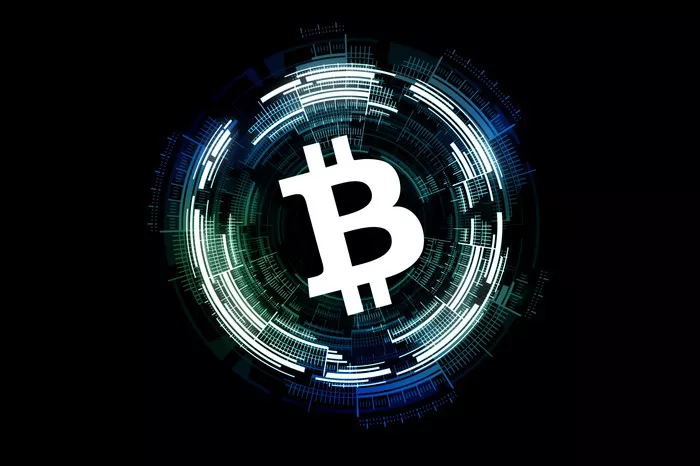In the fast-paced realm of cryptocurrency trading, perpetual futures contracts have emerged as a popular derivative instrument, offering traders unique opportunities to speculate on the price movements of digital assets. Unlike traditional futures contracts, perpetual futures contracts do not have an expiry date, allowing for continuous trading and providing traders with flexibility and liquidity. In this comprehensive guide, we delve into the intricacies of perpetual futures contracts, exploring their mechanisms, leveraging potential, trading strategies, risk management techniques, market dynamics, regulatory landscape, and popular trading platforms.
Definition and Concept
Perpetual futures contracts, often referred to simply as perpetuals, are derivative financial instruments that enable traders to speculate on the price fluctuations of cryptocurrencies without the need to own the underlying assets. Unlike traditional futures contracts, which have a predetermined expiry date, perpetual futures contracts have no fixed maturity date. Instead, they mimic the price of the underlying asset, typically a cryptocurrency such as Bitcoin or Ethereum, through a mechanism that ensures the contract’s price closely tracks the spot price.
Mechanism
The mechanism underlying perpetual futures contracts involves several key components. Firstly, perpetuals are designed to closely track the spot price of the underlying cryptocurrency, maintaining a price equilibrium through a funding mechanism. This mechanism, known as the funding rate, ensures that the contract’s price remains aligned with the spot price over time. Traders who hold positions in perpetual contracts pay or receive funding payments periodically, based on the difference between the contract price and the spot price.
Positions in perpetual futures contracts are settled using a funding mechanism rather than physical delivery of the underlying asset. This means that traders can hold their positions indefinitely, provided they have sufficient margin to cover potential losses.
Leverage and Margin Trading
One of the key features of perpetual futures contracts is their ability to offer leverage, allowing traders to amplify both potential profits and losses. Leverage enables traders to control larger positions with a smaller amount of capital, thereby magnifying their exposure to price movements. However, it’s essential to understand that while leverage can enhance profits, it also increases the risk of significant losses.
Margin trading is closely associated with perpetual futures contracts and involves borrowing funds to increase trading position sizes. Traders are required to maintain a certain level of margin in their accounts to cover potential losses, and failure to do so may result in liquidation of positions.
Funding Rates
Funding rates play a crucial role in perpetual futures contracts, helping to ensure that the contract price remains in line with the spot price of the underlying cryptocurrency. These rates are calculated periodically and are based on the price differential between the perpetual contract and the spot market. If the perpetual contract is trading at a premium to the spot price, long positions pay funding to short positions, and vice versa.
Funding rates are dynamic and can vary depending on market conditions. High funding rates may indicate bullish sentiment, while negative funding rates may suggest bearish sentiment. Traders should monitor funding rates closely, as they can impact the cost of holding positions in perpetual contracts.
Trading Strategies
A variety of trading strategies are employed in perpetual futures contract trading, each with its own risk-reward profile. Directional trading involves speculating on the future price movement of the underlying asset, either by taking long positions (betting on price increases) or short positions (betting on price decreases). Arbitrage strategies involve exploiting price differentials between different exchanges or markets, while hedging strategies aim to reduce risk by offsetting potential losses with opposing positions.
It’s important for traders to carefully consider the risks associated with each strategy and to develop a comprehensive risk management plan. While trading perpetual futures contracts can be lucrative, it also carries inherent risks, including market volatility, leverage amplification, and funding rate fluctuations.
Risk Management
Effective risk management is essential for success in perpetual futures contract trading. Traders should implement risk mitigation techniques such as setting stop-loss orders to limit potential losses, managing position sizes to avoid overexposure, and diversifying their portfolios to spread risk across multiple assets.
Additionally, traders should stay informed about market developments and maintain a disciplined approach to trading, avoiding emotional decision-making and sticking to their trading plan.
Market Dynamics and Liquidity
Perpetual futures contracts play a significant role in the cryptocurrency market, contributing to price discovery and market efficiency. By providing continuous trading opportunities and liquidity, perpetuals facilitate price convergence between different exchanges and enhance overall market liquidity.
However, it’s important to note that excessive reliance on perpetual futures contracts can also introduce risks to the market, such as increased volatility and potential market manipulation. Traders should be mindful of these dynamics and trade responsibly to contribute to a healthy and transparent market environment.
Regulatory Considerations
The regulatory landscape surrounding perpetual futures contracts varies by jurisdiction, with some countries imposing restrictions or requiring registration for trading such derivatives. Traders should be aware of the regulatory framework in their respective jurisdictions and comply with any legal requirements to ensure their trading activities are conducted in accordance with applicable laws and regulations.
Popular Platforms
Several cryptocurrency exchanges offer perpetual futures trading, providing traders with access to a wide range of digital assets and trading features. Some popular platforms include BitMEX, Binance Futures, Bybit, and FTX. Each platform offers unique features, such as varying leverage options, trading pairs, and fee structures. Traders should carefully evaluate these platforms based on their specific trading needs and preferences.
Conclusion
In conclusion, perpetual futures contracts have become an integral part of the cryptocurrency trading ecosystem, offering traders innovative ways to capitalize on price movements in digital assets. By understanding the mechanisms, leveraging potential, trading strategies, risk management techniques, market dynamics, regulatory considerations, and popular trading platforms associated with perpetuals, traders can navigate this dynamic market with confidence. However, it’s essential to approach trading with caution and to prioritize risk management to mitigate potential losses. With careful planning and execution, perpetual futures contracts can unlock exciting opportunities for traders in the ever-evolving crypto landscape.


